Ryan Hall's Blog, page 279
March 14, 2016
Photos: New Sports Nutrition at Natural Products Expo West

From March 9 to 13, the annual Natural Products Expo West showcased the latest trends in all-natural, non-GMO, organic, and/or gluten-free products. More than 3,000 companies and 70,000 attendees filled the Anaheim Convention Center in California, representing the industry’s healthiest brands. Amid the bonanza of food booths, our editors taste-tested and scouted out the newest, most intriguing and unique flavors, ingredients and products in sports nutrition, including new fuel items from popular household names such as Clif Bar and GU, protein bars made with cricket powder, several variations of meat bars, and more!
Photo Gallery
1 of {count}
Back to Start
View Larger Image

Clif Bar Nut Butter Filled Energy Bar
Clif Bar will be releasing their newest fuel item, a nut butter bar that's softer than the original bars, with a gooey nut butter filled center.
View Larger Image

GU Stroopwafel
GU has moved beyond its offering of energy gels, chews and hydration powders and tabs, to its first waffle packed with 20mg of caffeine and 75mg of sodium per serving. Flavors come in salty caramel or wild berries.
View Larger Image

Organic Prairie Mighty Bar
Organic Prairie's Mighty Bar has 9 grams of protein made with 100 percent grass-fed organic beef.
View Larger Image

iwon! Protein Chips
These gluten-free chips with 20 grams of protein per bag, are a good alternative to a post-workout protein bar or shake.
View Larger Image

Chapul Protein Bars
For the more adventurous, this bar contains ground up crickets that provide a more sustainable source of protein. Plus, crickets are high in iron and B12 as much as a whole cut of salmon. Flavors include peanut butter and chocolate, dark chocolate and coffee, coconut, ginger, lime, and a new matcha flavor.
View Larger Image

Pick Pocket Dips
An on-the-go packet of shelf-stable, non-refrigerated hummus makes this a good snack to pack on long trail runs and ultra races.
View Larger Image

Nomva
Everything is better in a pouch when leading an active lifestyle. These Nomva pouches contain cold-pressed juices from whole fruits with healthy probiotics good for digestion issues. They're best refrigerated, and therefore a good nutrient source after a hot summer run.
View Larger Image

Bearded Brothers Energy Bars
These bars contain only raw ingredients with 270mg of chia seeds that will keep you full and energized either before or during a run. The fabulous ginger peach flavor made with organic dates, walnuts and peaches was our favorite sampling.
View Larger Image

Simple Squares
Each Simple Square contains just five ingredients of nuts, honey, sea salt, vanilla and spices for a paleo-friendly bar.
View Larger Image

Wild Zora Meat and Veggie Bars
Meat bars are becoming increasingly popular as a substitute for wholesome protein bars. As the "original meat and veggie bar," Wild Zora is grain, gluten, nut and soy free, made with 100 percent grass-fed meats. Also another friendly option for runners on a paleo diet.
Related Galleries
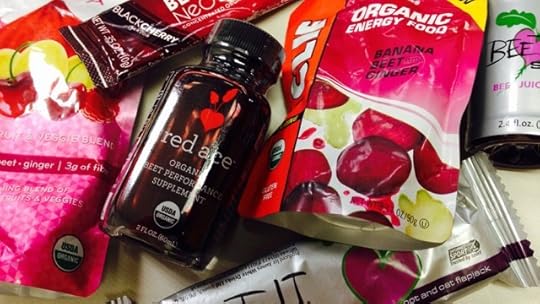
5 Beet Juice Products for Endurance Athletes

Photos: Clif Bar, Kind and Kashi Showcase New Products at California Expo

6 Products Packed With Chia Seeds

3 Quick Nutrition Tips For Runners

More Galleries
The post Photos: New Sports Nutrition at Natural Products Expo West appeared first on Competitor.com.
Why Hill Repeats Make You a Better Runner

This article first appeared on Triathlete.
While hill repeats have been a mainstay on the workout rotation for runners for decades, there actually isn’t an abundance of academic research on the practice. New research, however, is changing that, proving it to be well worth the effort.
A recent study published in the Journal of Strength and Conditioning sought to make a connection between treadmill intervals at an incline and running economy. Researchers compared three groups of runners: one group that performed 4–6 high-intensity treadmill intervals for an average of 2 minutes and 16 seconds with no incline, one group that performed 10–14 30-second high-intensity intervals at a 10 percent incline, and a control group who continued with their regular running routines. They found that both interval groups similarly improved aspects of running economy during the six-week study.
RELATED: What’s the Perfect Slope? Researchers Study Uphill Mountain Running
Another study published just last year in the International Journal of Sports Physiology and Performance had a group of runners perform six weeks of high-intensity uphill running intervals, discovering that not only did running economy improve, but they were 2 percent faster, on average, in 5K time-trial performances.
Carrie Barrett, a USAT-certified coach at Austin Aquatics and Sports Academy in Texas, points to two main benefits of doing uphill repeats in the off-season. The most obvious is strength and power.
“These short bursts of effort increase muscular endurance by improving neuromuscular responsiveness,” she explains. “Several muscle groups fire at once, increasing blood volume to these large muscles.”
Additionally, she cites enhancements in breathing, posture, cadence and efficiency as other positive side effects. And, thanks to the emphasis on horizontal propulsion, this type of workout improves economy by dampening vertical bouncing on the run.
To fully harness these benefits, an athlete must pay special attention to his or her running form when completing uphill intervals. Barrett works with her athletes on adopting a slight forward lean that stems from the ankles rather than the hips. She also encourages a high cadence and working on striking underneath the hips as you drive up the hill.
“Most of the time, I emphasize proper form over speed up the hill in order to get athletes to really visualize what they are doing,” she says. “One of the keys to running efficiency is minimizing the ground contact time, and proper hill running with a high cadence and good form helps with that.”
Hill Repeat Training Plan
Research indicates that just six weeks of hill repeats can make a difference in running performance. Here is a sample workout progression that can be done on a treadmill or outside, usually incorporating a hill workout once per week. Remember to start with an easy warm-up of 10–15 minutes and complete the repeats with increasing intensity from bottom to top.
Week 1
10–15-min warm-up
4–5 1-min repeats on a 4% grade hill, full jogging recovery between each
10–15-min cool-down
Week 2
10–15-min warm-up
5–6 1-min repeats on a 4% grade hill, full jogging recovery between each
10–15-min cool-down
Week 3
10-15-min warm-up
4–6 90-sec repeats on a 4–5% grade hill, full jogging recovery between each
10–15-min cool-down
Week 4
10–15-min warm-up
4–6 2–3-min repeats on a 4–5% grade hill, full jogging recovery between each
10–15-min cool-down
Week 5
10–15-min warm-up
6–8 2–3-min repeats on a 4–6% grade hill, full jogging recovery between each
10–15-min cool-down
Week 6
10–15-min warm-up
8–10 2–3-min repeats on a 4–6% grade hill, full jogging recovery between each
10–15-min cool-down
RELATED: A Trail Runner’s Guide to Uphill Running
The post Why Hill Repeats Make You a Better Runner appeared first on Competitor.com.
March 12, 2016
Photos: 2016 Rock ‘n’ Roll D.C.
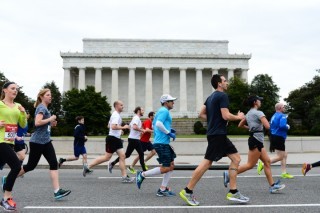
Perfect conditions in Washington D.C. made for a great morning of racing at Rock ‘n’ Roll D.C.
The marathon, half marathon and 5K hosted more than 24,000 runners. The marathon and half started at the National Mall and finished at RFK Stadium.
RELATED: Thousands Run Rock ‘n’ Roll D.C. in Perfect Conditions
Here are photos from the day, taken by Bruce Wodder:
Photo Gallery
1 of {count}
Back to Start
View Larger Image

View Larger Image

The course passed the Lincoln Memorial among many other landmarks.
View Larger Image
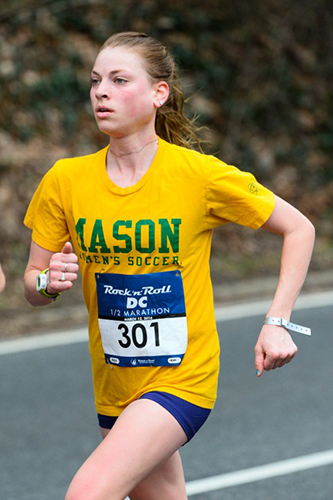
Bethany Sachtleben had a big day in the half marathon.
View Larger Image
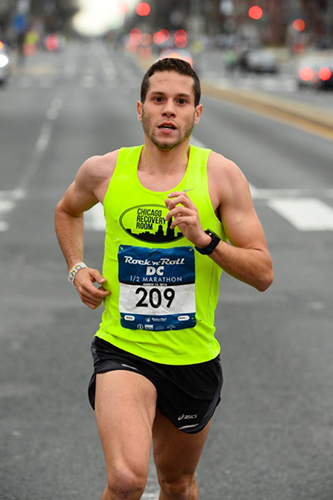
Mizael Carrera is shooting to represent Puerto Rico in the Olympics.
View Larger Image

View Larger Image

Passing the Washington Monument.
View Larger Image

View Larger Image

View Larger Image
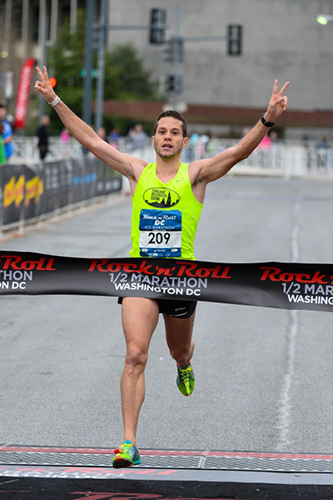
View Larger Image
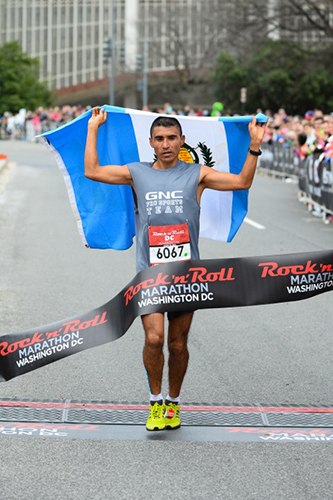
Alfredo Arevalo Reyes won the marathon in 2:30:05.
View Larger Image
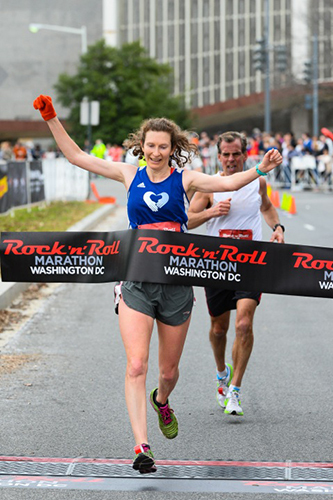
View Larger Image

View Larger Image

View Larger Image

Mizael Carrera won the half marathon in 1:06:17.
View Larger Image

View Larger Image

View Larger Image
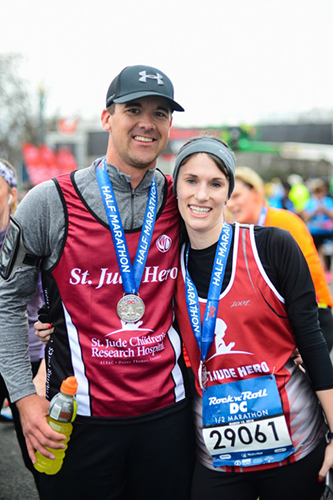
Related Galleries

Runners Rock in the Rain

Photos: 2015 Rock ‘n’ Roll DC Marathon and 1/2 Marathon

More Galleries
The post Photos: 2016 Rock ‘n’ Roll D.C. appeared first on Competitor.com.
A Gorgeous Day for Race Domination in D.C.
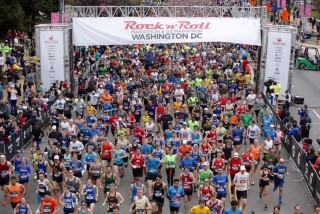
Washington D.C. has always been a city of beauty, but on Saturday, at the fifth edition of the Rock ‘n’ Roll D.C. Half and Full Marathon, the nation’s capital was especially scenic for 24,000 runners who turned out in gorgeous spring-like conditions to take part in the race.
After a heartfelt rendering of the national anthem within sight of iconic monuments like the Washington Monument, runners started out down the broad expanse of Constitution Avenue that runs alongside the National Mall.
Both the half marathon and the full were held together and the two lead packs quickly separated according to event.
Mizael Carrera, a Puerto Rican living in Addison, Illinois absolutely dominated the half marathon, clocking one hour, 6 minutes, and 17 seconds to break the tape in front of RFKstadium with a wave of the hand. The 24-year-old had a huge day, setting a 2-minute PR and winning the race with a huge margin over second-place finisher, Carlos Jamieson (1:07:53). Third place was awarded to Andrew Brodeur who was overcome by Jamieson in a sprint finish to the line.
”The race felt good,” said champion Carrera afterwards. “I ran it alone, and didn’t run 1:05 like I had hoped, but I’m happy with it.” Carrera, who before today, held a 1:08:08 half-marathon PR, is setting his sights on a 2:19 marathon so that he can represent Puerto Rico at the Summer Olympics in Rio. When asked how it felt to run pretty much the entire race alone, Carrera shrugged his shoulders and flashed a smile. “I was in great shape going into the race. It was fine. The only hard part for me was the big hill [at 10K], but I’m pleased with how I did.”
The first woman to cross the half marathon was Bethany Sachtleben who covered the 13.1 miles in 1:19:45, which is an average of 6:06 per mile. Sachtleben broke the finish-line tape wearing an “old school” yellow tee shirt that read “Mason Women’s Soccer.” Today’s victory was a thrilling experience forthe 24-year-old champion from Manassas, Virginia. “Today was amazing,” she said. “These Rock and Roll races are always a blast. There is so much support out there. I loved the course, especially when I passed the Georgetown Running Club. They pumped me up when I needed it.”
Second place in the women’s half when to Kerry Allen (1:20:10).
The third-place finisher, Hannah Eckstein (1:20:28), came across the finish wearing a “Run for St. Jude” tee shirt. “I have had some family members who have battled cancer and wanted to chip in to show my support,” Eckstein said. The 23-year-old, who works in Washington D.C. said she found out about the St. Jude Children’s Research Hospital after seeing an ad for it on the Metro. “I wanted to make today count,” she said. Eckstein ran her debut today and said she owes to her coach and members of the Georgetown Running Club. “It’s such a great team,” she said of them.
The men’s marathon went to the ultimate ringer, Alfredo Arevalo Reyes, a Guatemalan citizen won in 2:30:05 while holding his country’s flag over his head. Reyes, an Olympian who boasts a 2:12 marathon PR, signed up to race yesterday and led from start to finish. “I have never run in a Rock and Roll race before and I have to say this was the most fun I’ve ever had in a marathon,” he said through a translator. Second and third place were awarded to Steve Chu (2:34:11) and Dirian Bonilla (2:37:25).
The first woman to cross the marathon finish line was last year’s champion, Martha Nelson, who smiled when she saw her 2:58:09 finishing time. “I’m a born and bred Washington D.C. native, so it’s really nice to win this race,” she said afterwards. “The bands and the support on the course were great. It can get pretty lonely out there as a marathoner, so these kinds of things help.” Lori Nedescu (2:59:56) came in behind Nelson, while third place was awarded to Katie Moran.
A 5K was also held on Saturday. Dickson Mercer (16:10) was the men’s winner and Kendahl Melvin (20:56) prevailed in the women’s division.
True to the spirit of all Rock ‘n’ Roll races, runners and their families got their funk on at the Toyota Rock ‘n’ Roll Concert when Tower of Power took to the stage at RFK Stadium.
The post A Gorgeous Day for Race Domination in D.C. appeared first on Competitor.com.
Thousands Run Rock ‘n’ Roll D.C. in Perfect Conditions
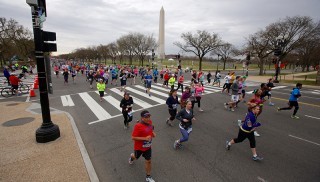
Washington D.C. has always been a city of beauty, but on Saturday, at the fifth edition of the Rock ‘n’ Roll D.C. Marathon and 1/2, the nation’s capital was especially scenic for 24,000 runners who turned out in gorgeous spring-like conditions to take part in the race.
After a heartfelt rendering of the national anthem within sight of iconic monuments like the Washington Monument, runners started out down the broad expanse of Constitution Avenue that runs alongside the National Mall.
Both the half marathon and the full were held together and the two lead packs quickly separated according to event.
Mizael Carrera, a Puerto Rican living in Addison, Ill., dominated the half marathon, clocking 1 hour, 6 minutes, and 17 seconds to break the tape in front of RFK Stadium with a wave of the hand. The 24-year-old had a huge day, setting a 2-minute PR and winning the race by a wide margin over second-place finisher, Carlos Jamieson (1:07:53). Third place was awarded to Andrew Brodeur who was overcome by Jamieson in a sprint finish to the line.
”The race felt good,” said champion Carrera afterwards. “I ran it alone, and didn’t run 1:05 like I had hoped, but I’m happy with it.”
Carrera, who before today, held a 1:08:08 half-marathon PR, is setting his sights on a 2:19 marathon so that he can represent Puerto Rico at the Summer Olympics in Rio. When asked how it felt to run pretty much the entire race alone, Carrera shrugged his shoulders and flashed a smile. “I was in great shape going into the race. It was fine. The only hard part for me was the big hill [at 10K], but I’m pleased with how I did.”
The first woman to cross the half marathon was Bethany Sachtleben who covered the 13.1 miles in 1:19:45, an average of 6:06 per mile. Sachtleben broke the finish-line tape wearing an “old school” yellow T-shirt that read “Mason Women’s Soccer.” Today’s victory was a thrilling experience for the 24-year-old champion from Manassas, Virginia. “Today was amazing,” she said. “These Rock ‘n’ Roll races are always a blast. There is so much support out there. I loved the course, especially when I passed the Georgetown Running Club. They pumped me up when I needed it.”
Second place in the women’s half when to Kerry Allen (1:20:10).
The third-place finisher, Hannah Eckstein (1:20:28), came across the finish wearing a “Run for St. Jude” tee shirt. “I have had some family members who have battled cancer and wanted to chip in to show my support,” Eckstein said. The 23-year-old, who works in Washington D.C. said she found out about the St. Jude Children’s Research Hospital after seeing an ad for it on the Metro. “I wanted to make today count,” she said. Eckstein ran her debut today and said she owes to her coach and members of the Georgetown Running Club. “It’s such a great team,” she said of them.
The men’s marathon went to Alfredo Arevalo Reyes, a Guatemalan citizen won in 2:30:05 while holding his country’s flag over his head. Reyes, an Olympian who boasts a 2:12 marathon PR, signed up to race yesterday and led from start to finish. “I have never run in a Rock ‘n’ Roll race before and I have to say this was the most fun I’ve ever had in a marathon,” he said through a translator. Second and third place were awarded to Steve Chu (2:34:11) and Dirian Bonilla (2:37:25).
The first woman to cross the marathon finish line was last year’s champion, Martha Nelson, who smiled when she saw her 2:58:09 finishing time. “I’m a born-and-bred Washington D.C. native, so it’s really nice to win this race,” she said afterwards. “The bands and the support on the course were great. It can get pretty lonely out there as a marathoner, so these kinds of things help.” Lori Nedescu (2:59:56) came in behind Nelson, while third place was awarded to Katie Moran.
A 5K was also held on Saturday. Dickson Mercer (16:10) was the men’s winner and Kendahl Melvin (20:56) prevailed in the women’s division.
True to the spirit of all Rock ‘n’ Roll races, runners and their families got their funk on at the Toyota Rock ‘n’ Roll Concert when Tower of Power took to the stage at RFK Stadium.
The post Thousands Run Rock ‘n’ Roll D.C. in Perfect Conditions appeared first on Competitor.com.
Hill, Rowbury Successfully Defend U.S. Indoor 3K Titles
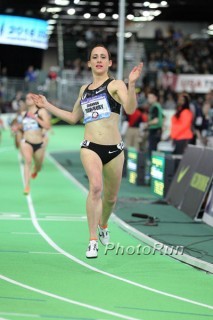
Shannon Rowbury breaks the tape to take home another national title. Photo: PhotoRun.net
(c) 2016 Race Results Weekly, all rights reserved. Used with permission.
PORTLAND, ORE., — Competing on the new emerald green 200 meter oval at the Oregon Convention Center here, Ryan Hill and Shannon Rowbury successfully defended their 3000m national titles in convincing fashion on the first day of the USA Indoor Championships.
Hill, 26, and a member of the Nike Bowerman Track Club based in Portland, was pulled along by teammates Andy Bayer, Lopez Lomong, and Evan Jager through the first 1000m in a snappy 2:31.9. Running in fourth place, the club’s race plan was working perfectly, especially for Hill.
“The other guys wanted to make sure that it was a 7:30-honest race,” Hill told reporters. “We didn’t want it to be an eight-minute race and finish four through eight, or something, and go home disappointed.”
Lomong took the lead from Bayer after the first kilometer, and kept the pace high. He made it to 2000m in 5:06.7 before dropping out, leaving Jager to take over for the next three laps, trailed by Garrett Heath of the Brooks Beasts. Hill held his position, until there were about 300 meters to go, and he made his bid for victory a little ahead of schedule.
“It looked like Evan was struggling a bit, so I decided to take the lead a little earlier,” Hill said. “If he looked good, I would probably had waited for 250 to go.”
But behind him, the U.S. Army’s Paul Chelimo had moved up from the splintered chase group and was closing fast on Hill, nearly catching him off guard. Hill didn’t realize Chelimo had moved up to pass Heath until he looked up at one of the big-screen monitors mounted at either end of the arena.
“Not until I looked up at the board one last time, and Garrett was gone, and it was a new guy,” Hill said of Chelimo. “I had no idea he was even there.”
Showing the formidable closing speed which also gave him the 3K title at the NYRR Millrose Games last month, Hill responded to Chelimo’s challenge by covering the final 200-meter circuit in 27.25, winning in 7:38.60, the second-fastest time in the world this year. Chelimo took second in 7:39.00, a personal best by almost six seconds, and like Hill, clinched a spot on the USA team for next weekend’s IAAF World Indoor Championships here.
Galen Rupp, who won the USA Olympic Trials Marathon in Los Angeles four weeks ago, finished eighth. Still feeling the fatigue of his marathon debut, he was never a factor in the race.
“Obviously, I’m a little tired from it,” Rupp said of his marathon effort. “It’s been interesting coming back. Obviously, they’re two very different events. I have no regrets. I’m glad I came back and at least gave it a shot.”
For Rowbury, 31, who lives and trains in the Portland area with the Nike Oregon Project, the last three laps offered far less drama. Rowbury spent most of the 15-lap race tucked in fifth place while the Bowerman Track Club’s Emily Infeld, last summer’s IAAF World Championships 10,000m bronze medalist, led the race for the first 2000 meters.
“I was grateful for Emily taking it out,” said Rowbury wearing her trademark bright pink lipstick. “I thought I might be dealing with something super, super slow. So it’s great. I felt really relaxed, really comfortable tucked in.”
Rowbury didn’t react when Marielle Hall took the lead from Infeld—who was clipped from behind, stepped into the infield and went out of contention—but decided to wait until there there were two laps to go. Swinging wide in the homestretch, she powered past the field with 400 meters to go, and opened up a 10-meter gap in just a few seconds.
“So I was trying to wait for an opportunity to get to the front without going too wide, but by 400 meters to go I was like, aah, screw it. Went out to lane three and then just took off.”
Clocking 61.61 seconds for the final 400 meters, Rowbury ran unchallenged to the finish tape in 8:55.65, capping off the race with a 2:52 kilometer. Former NCAA champion Abbey D’Agostino of New Balance finished second in 8:57.31, also clinching a team berth for the IAAF World Indoor Championships, her first for those championships.
“I really wanted to keep my eyes fixed on Shannon,” said D’Agostino who struggled with injuries most of last year. “I felt like I may have closed the gap a little bit. I knew she was going to have a strong kick.”
Olympic steeplechaser Shalaya Kipp finished third in 8:59.85.
In women’s 800m qualifying, the two athletes in possession of the world championships qualifying marks, Laura Roesler and Ajee’ Wilson, each won their heats. Roesler had to endure three botched starts where the electronic timing system failed and emitted false gun sounds before actually beginning her race.
“I don’t have any words for that,” Roesler told the media after running 2:03.77, the fastest time here today. “Obviously, that starting situation was a little messy. We were hearing an echo. Disclaimer: we’re not stupid; we know what a gun sounds like. We were hearing two sounds.”
In a tangle of arms, Phoebe Wright (2:03.81) and Mckayla Fricker (2:03.82) finished a close second and third behind Roesler, and both women qualified for the final on time.
Wilson strode easily through her heat and was never seriously challenged. She registered a pedestrian 2:05.96 winning time, and hardly seemed winded after the race.
“It felt comfortable,” said Wilson. “I’m excited for the final. I’m really happy with where I’m at right now. I’m coming off a PR in my last race at Millrose. Training’s been going really well.”
On the men’s side, the only athlete with the world championships 800m standard, Boris Berian, easily won the last of four heats by pulling away from early leader Mark Wieczorek on the final lap. Berian, who trains with the Big Bear Track Club under coach Carlos Handler, was the fastest American last year at 800m (1:43.34), but failed to make the national team for the IAAF World Championships in Beijing when he didn’t advance out of the semi-finals at the USA Trials. He clearly appreciates the opportunity he has this year to potentially make both the IAAF World Indoor Championships and the Olympic Games.
“It would be amazing,” said Berian. “It was a big disappointment last year not making that. So, I was getting started, having more experience, more training. Go out and make an indoor world team, that would definitely be great. I’m definitely in a lot better shape this time then I was last year.”
Erik Sowinski—who was the fastest here on the day, winning the third heat in 1:47.58—pointed out that it was still possible for another American man to make it to the world championships if the IAAF failed to fill the field, and decided to invite more athletes based on their best marks achieved during the qualifying period which ended on March 7.
“I know they started inviting people,” Sowinski said of the IAAF. “As far as I know they’re going to fill the field with 18. How they do that is up to them. We’ll see what happens.”
The post Hill, Rowbury Successfully Defend U.S. Indoor 3K Titles appeared first on Competitor.com.
March 11, 2016
Review: A Deeper Look At The Fitbit Blaze
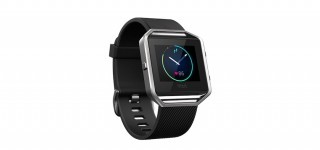
I’ve never been a regular watch-wearer; in fact, the only time you’ll see one on my wrist is when I’m running or out for a nice night on the town with my wife. So I was intrigued to give the new Fitbit Blaze a whirl over the past couple weeks to see how it performed as a running watch and all-day timepiece/fitness tracker. Here’s what I thought:
The Pros
One of the Blaze’s most attractive features is its adaptability. The square watch face easily pops in and out of three available band settings. The classic band and frame (included) is the one I use most often, especially when running or working out, while the luxe leather and luxe metal options (each sold separately) add some sophistication and style to your wrist for an important meeting or special occasion. The classic setup is also slim and light, and I was really impressed by how comfortable it was on my wrist while wearing it throughout the day. The color touchscreen is really intuitive and easy to read. There are four different clock faces to choose from depending on your preferences and/or mood.
Amongst its many functions—many of which I’ll dive deeper into later—the Blaze allows you to sync text and call notifications from your smartphone to your wrist. This feature actually works quite well, but it was one of the first ones I turned off as I found myself staring at my wrist every time there was an alert. You can also control your music from the watch (when synced with your phone), if that’s something that interests you.
I’ll get into the Blaze’s functionality as a running watch below (note: there’s a reason it’s not in this section), but I found its Fitstar exercise feature to be pretty neat. Fitstar, which lives on the watch and doesn’t require syncing with your smartphone or computer, provides you guided instructions and animated images for three different types of workouts: Warm It Up, the 7-Minute Workout and 10-Minute Abs. I didn’t think I’d ever use this feature, but gave it a shot and found the workouts to be pretty effective (what runner can’t stand to do some extra core work?) and the instructions easy to follow.
Finally, the Blaze syncs wirelessly via Bluetooth with your smartphone or computer, connects and uploads relatively seamlessly, and provides you plenty of data, charts and graphics to analyze. The platform also allows you to take part in challenges (e.g. chase a daily step count), follow friends, send motivating messages (and also “cheer” or “taunt” them), and earn badges and trophies for hitting marks that you’ve set for yourself.
The Cons
The Blaze is not geared toward the performance-minded athlete (which Fitbit doesn’t deny) and the run tracking feature doesn’t provide accurate mileage unless you’re running with your phone and using connected GPS. In multiple test runs not using connected GPS, my mileage was off by as much as four-tenths of a mile for a 5-mile run. That said, the connected GPS feature works really well—mileage was in line with my Garmin 220—but, like the Apple Watch, you need to have your phone with you to enable it. For what it’s worth, the FitBit/Strava sync is one of the most seamless I’ve seen—WAY better, faster and less clunkier than Garmin and Suunto. Like the Surge, the Blaze is missing some key features more performance-minded runners want and need, such as built-in GPS, more on-screen options, the ability to take splits, turn off auto-laps, etc. But for casual runners who aren’t too concerned with performance, accuracy or the ability to take splits during your workout—running is just one of a number of activities you do throughout the week—the watch covers the basics quite well.
Activity Tracking
Aside from when I’m wearing a Fitbit (I tested a Surge a few months ago), I have no idea how many total steps I’m taking throughout the course of a typical day, what my cumulative mileage is, or how many calories I’ve burned. That can be a good thing or a bad thing, depending on who you are and how you look at the data. I can understand the appeal for those who need the motivation and accountability to include more activity in their life but I can also see how constantly being exposed to those numbers might make someone obsessive about hitting a given target. One night, prior to going to bed, I did two laps around my apartment to get the 40 steps I needed to hit 20,000 for the day. Of course, I didn’t need those 40 steps, but seeing how those numbers influenced me to take action was eye-opening to me.
The most interesting—and useful—tracking feature for me has been in the area of sleep. The Fitbit app allows you to set a nightly sleep goal. For me, that’s 7 hours, and when I sync my watch to the app in the morning, it lets me know how close I’ve come to that target. This has been super insightful and motivating, as I can see a direct correlation between the quality of my sleep and how I feel and function the next day. Like the Surge and other Fitbit devices, the Blaze recognizes when you fall asleep, when you wake up (and for how long) and how many times you’re restless and/or awake. I’ve found this information to be pretty accurate. There are nights when I’ll fall asleep on the couch for an hour or so, take a few minutes to stumble into bed, and the watch recognizes this break in my sleep, showing I was honked out for a 60-minute stretch (when I was on the couch) and then a 6 or 7 hour stretch (when I finally got into bed.)
Heart-Rate Tracking
I don’t train by heart rate or monitor mine throughout the day, but I do know my numbers (my resting heart rate is typically between 44-48 beats per minute, my max is in the 190-range when I’m really pushing), so I was curious to see what the wrist-based heart-rate tracker told me. I’ve actually been really impressed by how accurate the Blaze’s readings have been when I wake up in the morning, while sitting at my desk, during easy runs and on the few occasions when I pushed hard. There have been a few occasions where the reading has cut out for a few seconds (indicated by a — on the screen) or been a little wonky, but for the most part it’s given me consistent feedback during a variety of activities.
Battery Life
With regular 24/7 wear, including running with connected GPS, I was able to go four and five days, respectively, between my first two charges with the Blaze. This is on par with what Fitbit claims on their website.
Final Thoughts
The Blaze is a fashion-forward fitness watch that you won’t mind having on your wrist all day, whether you’re going for a short run, heading to the gym, meeting a friend for lunch or going out to a nice dinner. It’s easy to use and performs all the key activity-tracking functions of other fitness watches without being overloaded by third-party apps or extraneous features. Most performance-minded runners and athletes won’t find it suitable for all of their workout needs but for the average active consumer, it’s a home run.
The post Review: A Deeper Look At The Fitbit Blaze appeared first on Competitor.com.
6 Useful Variations to Traditional Strength-Training Exercises
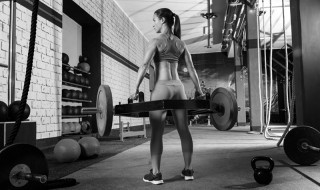
The Hex-Bar Deadlift is a great variation of a well-known exercise.
Whether you’re strength training to keep the injuries to a minimum or you’re working towards a new PR, the fact that you’re doing it is fantastic! Hitting the weights is one of the best steps you can take to develop yourself into a stronger runner. If you’ve been cranking out the same exercises workout after workout, it may be time to change things up.
Adding variety to your routine does more than prevent stagnation—it provides an opportunity to work different muscles that are often neglected, leading to a stronger, more balanced body. Give these six variations to traditional exercises a try and see if your running life doesn’t get just a little bit better.
Hex-Bar Deadlift
Why: When it comes to strength exercises, deadlifts are king—they work nearly every muscle in your body in one movement. In fact, perhaps the only exercise better than a deadlift is a deadlift with a hexagonal barbell, or hex-bar. In addition to loading the back and hips in a more conservative manner than a barbell, the hex-bar deadlift is ideal for athletes. A recent study published in The Journal of Strength and Conditioning Research found the hex-bar to be more effective at developing maximal force, power, and velocity than the barbell, despite the fact that similar maximal loads were used.
How: Stand in the center of a hex-bar with your feet hip-width apart. Flex your hips and knees to lower into a squat position and grasp the handles with an overhand grip. With your core engaged and back flat, look straight ahead as you push through your heels to lift the bar by extending your hips and knees simultaneously. With your hips fully extended, pause at the top of the movement then lower back to the starting position.
Goblet Squat
Why: We all know that squats lead to increased strength and endurance in the lower body. But did you know by substituting the goblet squat into your routine, you’re going to improve even more? While the goblet squat is not ideal for building muscle, it is optimal for improving endurance, glute activation, hip and ankle mobility, core strength, foot stability and full-body coordination. Light weights are great for warming up but save the heavier stuff for after your run.
How: Stand with your feet a bit wider than your shoulders and your toes pointed slightly outward. Hold a dumbbell or kettlebell with both hands at chest level with your elbows tucked and the weight close to your chest. With your chest up, back straight and core tight, sink down into a squat with your elbows tracking inside your knees, which means you’re getting low (this is where the good stuff happens). Squeeze your glutes and push through your heels to return to the standing position. Make sure to squat only as low as you comfortably can without causing pain or discomfort.
RELATED: Video: Goblet Squat
Lateral Lunge
Why: Even though running involves primarily moving in a forward plane, your inner and outer thigh muscles play a pivotal role in keeping everything stable, aligned and healthy—that includes your hips, IT band, knees and ankles. Lateral lunges target the stabilizing muscles, improving support and lessening your chance of injury.
How: Lateral lunges can be performed weighted or unweighted. Stand with your feet hip-width apart and torso erect. Take a large step to the right, transferring your weight onto your right leg as you bend your knee and lower down until your right thigh is horizontal and your left leg is straight. Press through your heel to return to standing and repeat the movement to the left.
RELATED: Video: Lateral Lunges
Rotational Step-Up
Why: Adding a rotation to the traditional step up hits a small group of muscles often neglected, the external rotators—important stabilizers of the hip joint. Recent research has found that those with greater hip external rotator strength had better dynamic control of the lower extremity during unanticipated single-leg landing—a huge plus when you’re running on uneven terrain.
How: Stand with your right side next to a 12- to 18-inch bench. Place your right foot on top of the bench with your knee and toes pointing away from your body. Press through your heel to step onto the bench, rotating your body so that you end the movement facing the same way as your toes. Lower back to the starting position, leaving your right foot on the step. Complete the desired number of repetitions, then switch legs.
Push-Up With Row
Why: While the push-up is virtually the perfect exercise—providing total body strength with no equipment—by adding a row to the movement you’re going to incorporate back muscles. Though often overlooked, a strong back will help keep your posture tall even as fatigue begins to set in, maintaining your ability for full lung expansion all the way to the finish line.
How: Begin in push-up position with a dumbbell in each hand. With a straight, rigid body, perform a push-up. Once you reach the “up” position, bend your right elbow to pull the weight toward your chest. Lower the weight and repeat with your left arm. That’s one repetition.
Side Plank with Leg Swing
Why: This plank variation is more challenging and dynamic than the static plank, engaging the abductors, glutes, hip flexors and shoulders as well as improving balance—all while strengthening that core.
How: Position yourself on your right side with your right elbow supporting your upper body and your hips and legs stacked. Stabilize your core and lift your hips off the floor so that your body forms a straight line. Maintain this position and your balance as you lift your left leg a few inches until it’s parallel with the floor. Begin to swing your leg from front to back (think of the legs swings you do prior to a run). Perform for 30 to 60 seconds before switching to the other side.
RELATED:
Why Runners Should Do Eccentric Training
* * *
References
http://www.ncbi.nlm.nih.gov/pubmed/26840440
The post 6 Useful Variations to Traditional Strength-Training Exercises appeared first on Competitor.com.
Video: How to Do a Goblet Squat
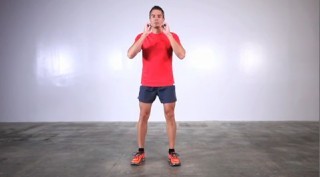
This slight variation of the traditional squat can make big gains in running-specific strength.
The post Video: How to Do a Goblet Squat appeared first on Competitor.com.
2016 Running Gear Guide: Trail Running Shoes
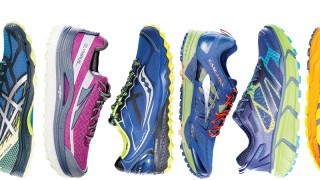
$120, Brooksrunning.com
If you want a trail shoe that tackles most types of terrain pretty well, this is the shoe for you. you can run on technical routes with sharp, jagged rocks in the Cascadia (it has a forefoot rock plate) or you can run smooth dirt trails to your heart’s content, and anything in between. The slight tweaks to the latest edition of this tried-and-true trail fiend make it the best all-around version yet. It still offers a supportive ride, thanks to four pivot point posts throughout the midsole—they work like a medial post on a stability-oriented road shoe, but are less rigid and controlling. The posts do a good job at providing support over changing terrain without overcorrecting stride. Ample cushioning and a comfortable upper make this shoe feel good from the get-go, and the array of small knobby outsole lugs underfoot grips even slick dirt and rock. The updated, more rugged toe box is durable and protective, while a new saddle configuration and more sensibly placed overlays offer a better fit with less material. Some of our wear-testers found this shoe a little bit stiff, but we loved that it’s versatile enough to run on all types of trails (and even roads when necessary). rare is the trail shoe that can conquer so much ground, which is why we like this one so darn much.
weights: 11.8 oz. (men’s), 10.1 oz. (women’s)
heel-toe offset: 10mm; 27mm (heel), 17mm (forefoot)
The post 2016 Running Gear Guide: Trail Running Shoes appeared first on Competitor.com.
Ryan Hall's Blog
- Ryan Hall's profile
- 21 followers



